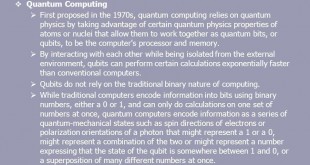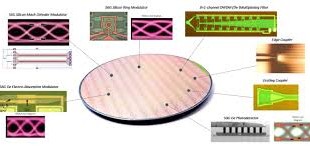DARPA’s Quantum Laser: A New Era in Military-Grade Photonics
Harnessing quantum entanglement, DARPA’s next-gen laser promises unmatched stability, precision, and resilience — redefining the future of defense and communication.
Introduction
DARPA’s groundbreaking project to develop a military-grade quantum laser represents a significant leap forward in laser technology. Unlike conventional lasers that rely on stimulating electrons to emit coherent light, this innovative system employs quantum entanglement to bind photons together, creating a highly concentrated, stable beam. With a prototype currently in development under a dedicated research grant, this quantum laser is poised to redefine several critical military applications, including satellite communications, advanced LIDAR mapping, and precision targeting systems.
A Quantum Leap in Laser Technology
Traditional lasers operate on the principle of stimulated emission, where electrons in atoms or molecules are excited to a higher energy state through an external energy source such as electrical current or optical pumping. When these excited electrons return to a lower energy state, they emit photons—particles of light—that are coherent, meaning they have a consistent phase and wavelength. These photons then stimulate other excited electrons to emit additional photons of the same phase and wavelength, resulting in an amplified light beam. The laser cavity, typically consisting of two mirrors, plays a crucial role by reflecting the photons back and forth, further enhancing the light intensity through multiple passes. This process ultimately produces a highly focused, monochromatic beam of light that can be directed with precision.
In contrast, the new quantum laser takes a radically different approach by leveraging the phenomenon of quantum entanglement. In this technology, photons are not simply generated and amplified through stimulated emission; instead, they are “glued” together via entanglement—a quantum mechanical connection that links the properties of particles regardless of distance. When photons are entangled, they share a common quantum state, which enables them to behave as a unified ensemble. This means that even if some individual photons are degraded by factors such as atmospheric interference or scattering, the overall coherence and integrity of the laser beam remain intact because the entangled photons effectively support one another.
In this process, pairs or groups of photons are generated in such a way that their quantum states are inseparably linked. That means properties like polarization, phase, or spin aren’t independent anymore — they’re shared across the whole group. The result is a beam that stays phase-locked, highly stable, and resistant to decoherence, delivering more power over longer distances and through harsher conditions than conventional lasers could ever achieve.
If one photon is disturbed by scattering, turbulence, or even noise from the atmosphere, the entanglement forces the others to “correct” and maintain the overall coherence of the beam. This is different from ordinary lasers, where any disruption causes the light to lose alignment and spread out. You can think of it like a squad of soldiers moving in lockstep: even if one stumbles, the others keep the formation steady. The result is a beam that stays phase-locked, highly stable, and resistant to decoherence, delivering more power over longer distances and through harsher conditions than conventional lasers could ever achieve.
When two photons are linked together through quantum entanglement, they create what are known as photonic dimers, project lead Jung-Tsung Shen, associate professor of electrical & systems engineering at Washington University in St. Louis, said. These pairs of photons are easier to manipulate because they act as a single entity, with any change applied to one photon directly affecting the other. This binding of light particles increases the energy and stability of the laser, making it better at performing over long distances and in adverse conditions like extreme temperatures and fog.
This enhanced stability and concentration are particularly critical in military applications, where lasers must perform reliably in adverse environmental conditions. The robustness provided by entanglement ensures that the beam can maintain its high energy density and sharp focus over longer distances than conventional lasers. In practical terms, this means that a quantum laser could deliver a more powerful and precise beam even when faced with the challenges of variable weather, turbulent atmospheric conditions, or electronic countermeasures on the battlefield.
Overall, while traditional lasers rely on the repetitive stimulation and amplification of light through carefully controlled atomic transitions, quantum lasers harness the unique properties of quantum entanglement to produce a beam that is inherently more resistant to degradation. This capability to maintain enhanced coherence and energy over extended ranges represents a significant technological advancement, offering the potential to overcome many of the environmental challenges that limit the performance of conventional laser systems in military operations.
Enhanced Performance in Challenging Environments
The quantum laser’s design is particularly advantageous for military applications, where environmental conditions can be highly variable and unpredictable. When operating in adverse conditions—such as turbulent atmospheric layers or in the presence of electronic countermeasures—the entangled photons are better able to protect each other from disruption. This results in a laser beam that not only retains its intensity and focus but also delivers consistent performance even under high-stress conditions. Such reliability is crucial for applications like long-range satellite communications and advanced targeting systems, where the precision and power of the laser can directly influence mission outcomes.
DARPA Awards
Strategic Implications and Future Prospects
Beyond its immediate military applications, DARPA’s quantum laser has broader implications for the future of technology. The principles underlying this breakthrough could extend to quantum computing and next-generation telecommunications, offering enhanced data transfer capabilities and more resilient communication networks. By enabling the transmission of high-energy, stable laser beams in both space and terrestrial environments, the technology promises to revolutionize the way secure communications and advanced sensor systems are designed. Moreover, the development of this quantum laser signals a paradigm shift in photonics, opening up new avenues for research and innovation that may well redefine global standards in both commercial and defense sectors.
Conclusion
DARPA’s pursuit of a military-grade quantum laser represents a transformative step in the evolution of laser technology. By harnessing quantum entanglement to create a highly concentrated, robust beam, this innovation addresses the critical challenges of maintaining performance in harsh, unpredictable environments. As this technology matures, its impact is expected to extend beyond traditional military applications, potentially revolutionizing quantum computing and secure communications, and paving the way for a future where advanced photonics become a cornerstone of global technological prowess.
Referenes and Resources also include:
https://bgr.com/science/darpas-new-military-grade-quantum-laser-is-like-nothing-weve-seen-before/
 International Defense Security & Technology Your trusted Source for News, Research and Analysis
International Defense Security & Technology Your trusted Source for News, Research and Analysis

